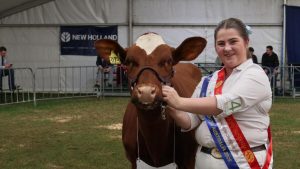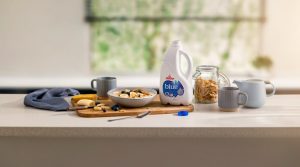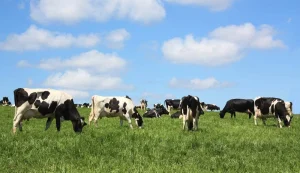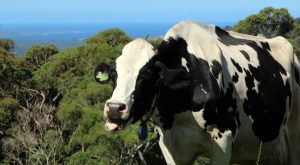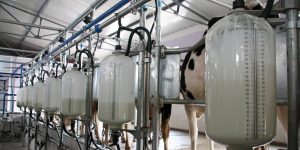
There are early records of cheese production in the Hunter but it never became a staple industry.
The history of dairy farming is directly linked to changes in technology, initially the production of relatively inexpensive mild steel, then refrigeration and transport.
The dairy industry flourished in Maitland when cream could be mechanically separated from milk, enabling the cream to be made into butter, a high value low volume product easily transported to Sydney and beyond.
This technology was available through large milk separators from around 1890. There was one down the river at Nelson's Plains or Osterley, another at Millers Forest.
These large separators were soon replaced by on-farm separators which enabled small farms to be established wherever there was land to graze cows.
The cream was sent off to a butter factory at Bowthorne (later located at Morpeth) and for a period a large state-of-the-art butter factory operated on the Duckenfield Estate.
This was eventually consolidated to Hexham. During the 1920s there was much optimism around dairying and many farms on the Bolwarra estate with land above flood level became dairies.
Small two or three-bail walk- though dairies were built and many of these remain scattered across the ridges running down to the Bolwarra flats from Paterson and Dalveen roads and elsewhere around Maitland.
They were assisted by government support for building silos to store forage for the winter. A number of these remain.
There are few, if any, dairy farms in the Maitland City Council area because of technical and economic changes in the industry.
These days any Hunter dairies are further up the respective valleys, all milk transported to Sydney for processing. Until the 1960s, a family could live off a farm milking fewer than 50 cows but over time, to be viable, herds had to be larger.
This required greater acreage and the small land-locked farms in the Maitland area were some of the first to cease dairying.
These conditions have similarly affected thousands elsewhere in NSW over the past 50 years. At one time there were 30,000 dairy farms in NSW; now there are around 500. The average herd size has grown over time to be just under 300 head of milkers.
Further evidence of this change in the magnitude of the industry is in the Oak brand, once synonymous with Hunter Valley milk but now a national brand often seen on sporting teams.
For example, Oak is the premium partner sponsor of Penrith Panthers but in the past it sponsored some Newcastle sporting teams.
The origins of the Oak brand can be traced back to 1903 when it was created by the Raymond Terrace Cooperative, later becoming the Hunter Valley Cooperative Dairy Company. However, this brand is now owned by the French multinational dairy and food corporation, Lactalis.




